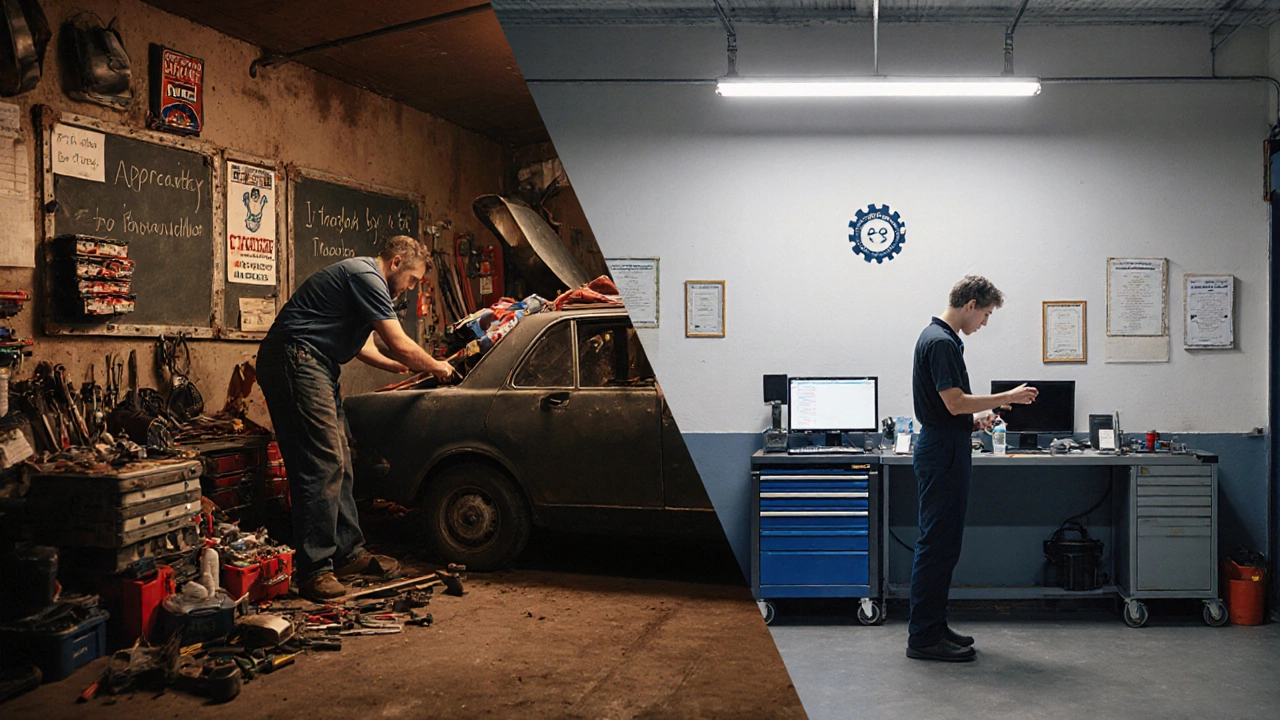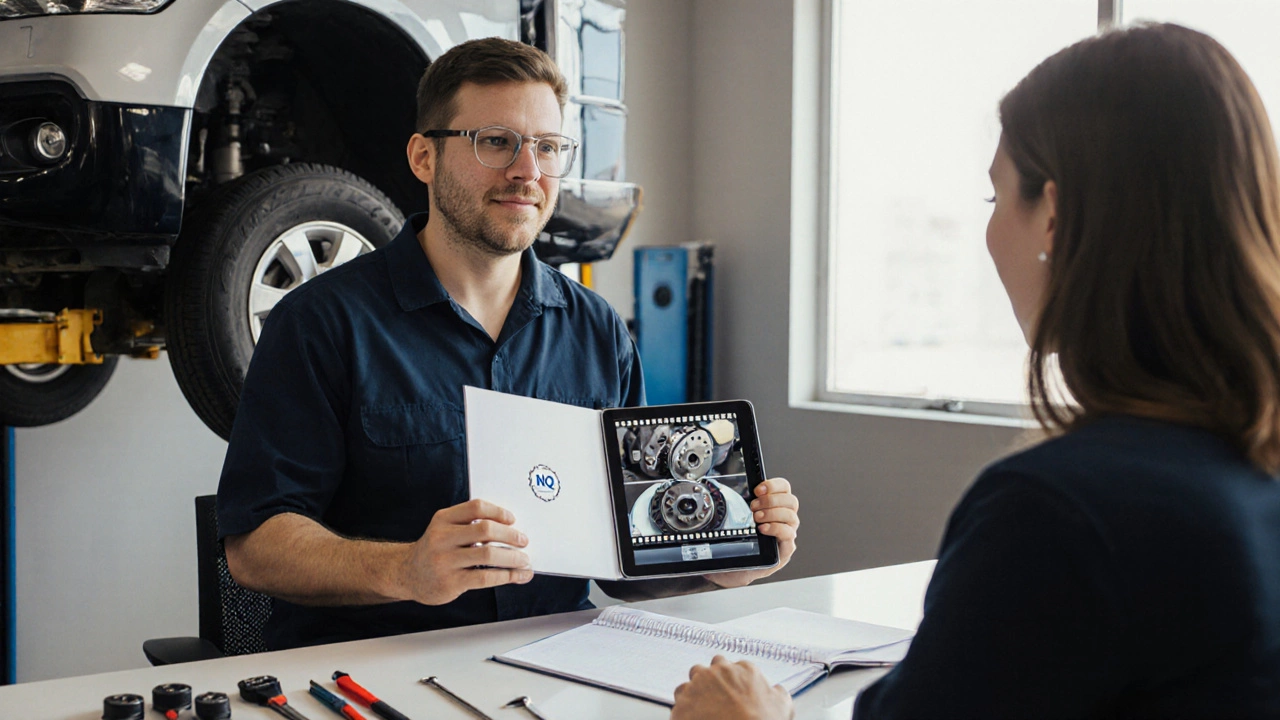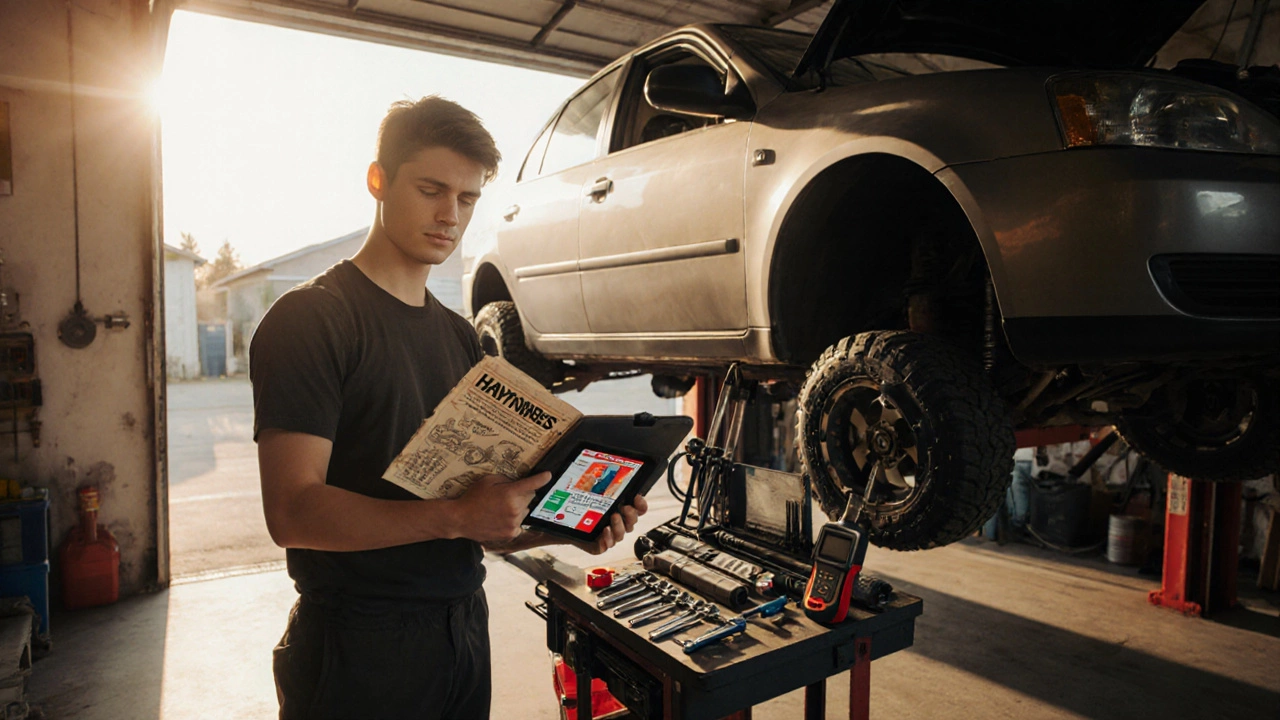Mechanic Path Calculator
Which Path Is Right For You?
Find the best route to become a mechanic based on your goals, time, and budget
Your Goals
Your Time Commitment
Your Budget
Your Recommended Path
Self-Taught Path
Formal Training Path
Key Recommendations
Ever wondered if you can skip the classroom and still become a competent mechanic? The short answer is yes - but it takes a clear plan, the right tools, and a lot of discipline. Below you’ll find a step‑by‑step roadmap that turns curiosity into real‑world skill, whether you’re fixing a weekend‑project car or aiming for a full‑time garage job.
What does a mechanic actually do?
At its core, an automotive mechanic is a professional who diagnoses, repairs, and maintains motor vehicles. The job blends hands‑on work - swapping brakes, tuning engines, reading diagnostic codes - with a solid knowledge base about engines, suspension, electrical systems, and safety standards.
Self‑taught vs. formal training: the big picture
| Aspect | Self‑taught mechanic | Apprenticeship / formal training |
|---|---|---|
| Typical duration | 6‑24 months (self‑paced) | 2‑4 years (structured) |
| Cost | £0‑£1,200 (books, online courses, tools) | £2,000‑£6,000 (tuition, fees, equipment) |
| Certification | ASE‑style tests, personal portfolio | NVQ Level 2/3, ASE, employer endorsement |
| Hands‑on exposure | Varies - depends on personal projects | Daily shop floor, mentor supervision |
| Job prospects | Entry‑level roles, freelance, specialist niches | Broad range - dealer, fleet, specialist garage |
The table shows where self‑learning shines (flexibility, low cost) and where apprenticeships win (structured experience, recognized credentials). Knowing the trade‑offs helps you decide which path matches your goals.
Key skills every mechanic needs
Regardless of how you learn, you’ll need a core set of abilities. Master these first, then layer on specialty knowledge:
- Engine fundamentals: compression cycles, fuel delivery, valve timing.
- Electrical basics: reading wiring diagrams, using a multimeter.
- Diagnostic reasoning: interpreting OBD‑II codes, symptom analysis.
- Tool proficiency: torque wrenches, impact drivers, diagnostic scanners.
- Safety awareness: lift procedures, PPE, hazardous material handling.
These pillars form the language of every garage. If you can talk about them confidently, you’ll already sound like a professional.

Resources you can use to teach yourself
Below is a curated toolkit that covers theory, practice, and certification. Pick what fits your schedule and budget.
- Repair manuals: Haynes, Chilton, or factory service manuals give step‑by‑step procedures. They’re cheap (often £20‑£40 per model) and invaluable for hands‑on work.
- Online automotive courses: Platforms such as Udemy, Coursera, and the UK‑based City & Guilds e‑learning portal offer courses ranging from “Basic Engine Repair” to “Advanced Hybrid Systems”. Look for courses that award a certificate of completion.
- YouTube channels: ChrisFix, Scotty Kilmer, and BimmerTech break down common repairs with clear visuals. Subscribe, create playlists, and pause‑rewind to match your own car.
- Diagnostic tools: A basic OBD‑II scanner (e.g., Autel AutoLink) costs under £100. It reads fault codes, clears them, and can display live sensor data - perfect for practice on any modern vehicle.
- Community workshops: Many local garages run “open‑shop” evenings where hobbyists can use lifts and tools for a small fee. Check community boards or Meetup groups for “DIY Car Repair” events.
- Automotive forums: Sites like CarForums or model‑specific threads (e.g., VW‑vortex) let you ask questions, share pictures, and get feedback from seasoned techs.
- NVQ Level 2 in Vehicle Maintenance: Even if you skip the full apprenticeship, you can sit the assessment independently. Passing proves you meet UK standards and looks great on a résumé.
- ASE certification practice tests: The US Automotive Service Excellence (ASE) offers practice exams online. While not required in the UK, the content aligns with global standards and signals competence to employers.
Combine theory (manuals, videos) with real‑world practice (community workshops, personal projects). The more you repeat a repair, the faster the knowledge sticks.
Building a portfolio that lands you a job
Hiring managers want proof you can work on real cars, not just watch tutorials. Here’s how to showcase your self‑taught journey:
- Document every project: Take before/after photos, note parts used, and write a brief diagnostic summary. Store them in a simple PDF or online portfolio site.
- Create a video reel: A 2‑minute compilation of you disassembling a brake caliper, swapping a clutch, or diagnosing a misfire demonstrates confidence and communication skills.
- Gather references: If you’ve helped friends or family, ask them for a short testimonial about your reliability and workmanship.
- Earn a recognized badge: Pass the NVQ assessment or an ASE practice exam. Add the badge image to your CV and LinkedIn profile.
- Volunteer in a garage: Even a few unpaid hours give you shop‑floor exposure and a reference from a licensed mechanic.
When you walk into an interview, bring a printed portfolio. It turns “self‑taught” from a buzzword into concrete evidence.

Common pitfalls and how to avoid them
Self‑teaching is rewarding, but it’s easy to slip into traps that stall progress:
- Skipping safety: Never work under a car on a jack alone. Always use jack stands and wear safety glasses.
- Relying on one source: Cross‑check any repair step with at least two references (e.g., manual + video). Different manufacturers may have slight variations.
- Ignoring the basics: Jumping straight to performance upgrades without mastering routine maintenance leads to costly mistakes.
- Not updating tools: A cheap ratchet set will choke you after a few jobs. Invest early in quality sockets and a digital torque wrench.
- Failure to test: After a repair, always run a road test or simulation to confirm the issue is truly resolved.
By staying disciplined, you turn curiosity into a marketable skill.
Is being a self‑taught mechanic right for you?
If you thrive on independence, have a modest budget, and can carve out regular workshop time, the DIY route works well. On the other hand, if you prefer a structured curriculum, want guaranteed certifications, or need a fast track into a large dealer network, an apprenticeship or trade‑school program may be the smarter choice.
Can I become a licensed mechanic without formal education?
In the UK, you don’t need a degree to work as a mechanic, but many employers look for an NVQ Level 2 or 3. You can sit the NVQ assessment independently after gaining hands‑on experience, which lets you earn a recognized qualification without a full‑time course.
How long does it typically take to become competent on my own?
It varies, but most self‑taught enthusiasts reach a level where they can handle routine maintenance (oil changes, brake pads, battery swaps) within 6‑12 months of consistent practice. Mastering complex diagnostics may take 18‑24 months.
Do employers value self‑taught experience?
Yes, especially if you back it up with a portfolio, certifications (NVQ, ASE), and references. Many small independent garages appreciate practical ability over formal credentials.
What is the cheapest way to get essential tools?
Start with a basic ratchet set, a set of metric sockets, a torque wrench, and a reliable OBD‑II scanner. Look for used tool kits on eBay or local classifieds; you can often find quality sets for under £200.
Is there a difference between a mechanic and a technician?
The terms overlap, but “technician” often implies more focus on electronic diagnostics and newer hybrid/electric systems, while “mechanic” traditionally covers engine, drivetrain, and basic electrical work.





Write a comment